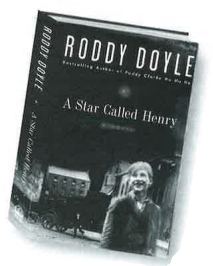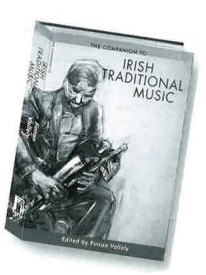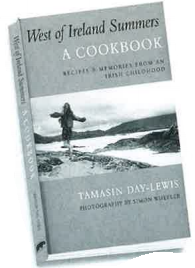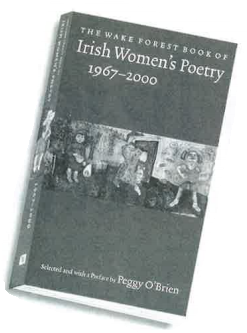Fiction
He may not have been nominated for this year’s Booker Prize, much to the surprise of many observers, but with A Star Called Henry, Roddy Doyle has written a book that, for my money, far surpasses Paddy Clarke Ha Ha Ha, the work that won him the prestigious literary award in 1993.
Henry Smart is the larger-than-life hero of Doyle’s latest work, but it’s his infamous one-legged father and dead older brother, lost in infancy, who first laid claim to the name.
When Henry Smart the third finally arrives (“a broth of an infant, the wonder of Summerhill and beyond”), he spends his childhood fighting for equal recognition in his mother’s eyes, but he can’t hope to win against her poor dead Henry.
But our Henry grows up to great things. Homeless from the tender age of five, and with only his baby brother Victor for company, he roams the streets of his beloved city, foraging for food and pausing only to insult King Edward VII as the monarch parades through Dublin.
Five years after Victor has succumbed to the same choking cough that’s slowly killing Dublin’s poor, Henry reemerges in his new incarnation as a freedom fighter, one of the brave rebels who stormed the GPO at Easter 1916 and held off the British troops. Fighting shoulder-to-shoulder with men like James Connolly and Padraig Pearse, the bold Henry takes time out only to indulge in pleasures of the flesh.
Doyle uses a broad historical base as his canvas, deftly sketching the derring-do of Henry as his main picture. While Henry’s tale is told in the context of the Easter Rising and the long-running fight for nationalism, the reader is never in any doubt that it is Henry himself who is the focus of Doyle’s work. The first in a promised trilogy, A Star Called Henry is well worth reading.
The thriller novels of Boston author Dennis Lehane just get better and better and in Prayers for Rain, his latest in the Patrick Kenzie series, Lehane has fashioned another gripping tale of murderous mayhem. Like Lehane himself, Kenzie is an Irish American Beantown native. In this, the fifth volume of what Lehane has always said would be a five-book series, the wisecracking investigator is hired by a young woman to look into an apparent stalking case. Once the problem has been solved, he promptly forgets about Karen Nichols — that is, until she shows up dead. Like Lehane’s previous novels, Prayers for Rain is full of neat little twists and surprises which make for gripping reading. Kenzie’s exploits have always made for enthralling storylines, and this latest is no exception. Those who have already discovered the talents of Dennis Lehane will be pleased to note that Prayers for Rain also features a new development in the relationship between Kenzie and his former partner, Angie Gennaro. Put it down if you dare!
Non-Fiction
Actor Daniel Day-Lewis (In the Name of the Father, My Left Foot) has often talked in interviews about his fond memories of childhood summers spent with his family in the west of Ireland. Now another member of the Day-Lewis clan — sister Tamasin — has recalled her own memories of those glorious days with a mouth-watering meal of a cookbook, which combines her recollections with stunning photography by Simon Wheeler and appetizing recipes. In West of Ireland Summers, A Cookbook: Recipes &Memories from an Irish Childhood, Day-Lewis writes: “I cannot imagine my earliest childhood memories revolving around anything other than food, cooking and kitchens.” Beef braised with Guinness; rhubarb, orange and honey pie; and Killary Bay mussel chowder are just some of the dishes you’ll be able to serve up with the help of this tasty book.
Weighing in at 600 pages, The Companion to Irish Traditional Music is hardly a book to carry around for light reading, but it is a valuable reference book that will delight fans and players alike. Over 100 contributors have written on topics ranging from jigs to gentlemen pipers and on personalities from De Dannan’s Frankie Gavin to The Chieftains. Edited by Fintan Vallely, the book also features 40 music samples. Available from New York University Press.
 The story of the San Patricios has been much to the forefront recently, with the recent (limited) release of One Man’s Hero, starring Tom Berenger as Irish immigrant John Riley. In The Rogue’s March: John Riley and the St. Patrick’s Battalion 184648, historical writer Peter F. Stevens takes a closer look at the “tough, charismatic Galwayman” and his troop of U.S. army deserters. Stevens’ descriptive writing brings Riley and the San Patricios wonderfully to life, as he traces the sequence of events that led to over 700 soldiers of Irish descent defecting from the U.S. army and switching allegiance to fight with Mexico in the Mexican-American War of the mid-1840s. Thirty men were hanged in September of 1847, at the same time as the Great Famine raged through their homeland thousands of miles away.
The story of the San Patricios has been much to the forefront recently, with the recent (limited) release of One Man’s Hero, starring Tom Berenger as Irish immigrant John Riley. In The Rogue’s March: John Riley and the St. Patrick’s Battalion 184648, historical writer Peter F. Stevens takes a closer look at the “tough, charismatic Galwayman” and his troop of U.S. army deserters. Stevens’ descriptive writing brings Riley and the San Patricios wonderfully to life, as he traces the sequence of events that led to over 700 soldiers of Irish descent defecting from the U.S. army and switching allegiance to fight with Mexico in the Mexican-American War of the mid-1840s. Thirty men were hanged in September of 1847, at the same time as the Great Famine raged through their homeland thousands of miles away.
The Irish have always been known for their somewhat unique command of the English language, and a new book by Loreto Todd examines the ways in which Irish speakers not only adopted English but “grafted it onto a Gaelic stem.” Green English: Ireland’s Influence on the English Language looks at the gradual spread of English in Ireland and the ways in which the Irish adapted the tongue to suit their own purposes. Place names, grammatical idiosyncrasies and patterns of speech are examined in this interesting work.
Its girth (712 tightly-packed pages) may be daunting, but in The Great Shame: And the Triumph of the Irish in the English-Speaking World, Schindler’s List author Thomas Keneally has fashioned a masterful work of epic proportions. The Great Shame traces the paths of the Irish who left their homeland during the Famine era, and sought salvation in the U.S. and Australia.
Included in the book is the story of young Galway man Hugh Larkin, an ancestor of Keneally’s wife. California state senator Tom Hayden, writing about the book in the Los Angeles Times, described it as “an important reclaiming of the Irish past and American history…a brave work whose narrative threads connect the personal, the political and the historical.”
Poetry
 The work of some of Ireland’s best women poets over the last 30 years is gathered in a new collection called The Wake Forest Book of Irish Women’s Poetry, 1967-2000. Contributors include Eavan Boland, Medbh McGuckian, Rita Ann Higgins and Nuala Ní Dhomhnaill. Unlike other anthologies, the book focuses on just nine poets, but includes several works from each. It’s a delightful compendium, to be savored over time and dipped into again and again.
The work of some of Ireland’s best women poets over the last 30 years is gathered in a new collection called The Wake Forest Book of Irish Women’s Poetry, 1967-2000. Contributors include Eavan Boland, Medbh McGuckian, Rita Ann Higgins and Nuala Ní Dhomhnaill. Unlike other anthologies, the book focuses on just nine poets, but includes several works from each. It’s a delightful compendium, to be savored over time and dipped into again and again.
Memoirs
Fans of Andrew M. Greeley’s fiction will doubtless be interested to learn that the Chicago-based cleric has a new book due out in December — Furthermore! Memories of a Parish Priest. The second volume of the prolific author’s memoirs, Furthermore! is a mix of memories and musings on topics ranging from high school reunions to sociology to an examination of Greeley’s own fiction. “I never particularly wanted to be a writer,” he notes in his introduction, “and now find it hard to identify [myself] as a writer, much less with my own writings. Perhaps that is the reason I write so easily.”
With the help of playwright Brian Friel, the oral memoir of Donegal weaver Charles McGlinchey (1861-1954) has been released in book form for the first time on this side of the Atlantic. The Last of the Name is a fascinating look at 19th century Ireland, in much the same way as Peig Sayers immortalized life on the Aran Islands for generations of students in Irish schools. McGlinchey’s memories were faithfully recorded by his friend Patrick Kavanagh, the local schoolmaster, shortly before his death and the manuscript was passed to Kavanagh’s son who solicited Brian Friel’s help in shaping the tale.
Young Adults
Lord knows it’s hard at times persuading teenagers to forgo the TV controls for a real, live book, but the trick is often in the quality of the material presented to them. In a fascinating blend of history and fiction, Co. Clare-based author Cora Harrison has written a five-book series set in a place called Drumshee. In Nuala & Her Secret Wolf, the first book in the collection, a young Irish girl living in the Iron Age adopts an orphan wolf cub who turns out to be a trusty friend. Book 2, The Secret of the Seven Crosses, tells the tale of Malachy, the 13th century monk who’s engrossed in exploring the mysteries of Kilfenora Abbey. In The Secret of Drumshee Castle, orphaned Grace tries to outwit her convincing aunt and uncle by seeking the help of Queen Elizabeth. Caitriona and her French sailor friend Serge are the two main protagonists in The Secret of 1798, and the final book of the series, The Famine Secret, jumps right along to 1847 and the dreadful blight. All five books are linked to each other by means of clever little plot devices and both the characters and the stories are fresh and lively. Recommended for ages 9 through 12.
When David Trimble and John Hume received the Nobel Peace Prize last year, they were not the first joint recipients to be honored for their work in Northern Ireland. That distinction belongs to peace activists Máiread Corrigan and Betty Williams, who shared the Nobel over two decades earlier, in 1976. In a book titled Máiread Corrigan & Betty Williams: Making Peace in Northern Ireland, Bettina Ling and Irish America staff writer Sarah Buscher trace a brief history of Northern Ireland and the genesis of Peace People, the movement founded by Corrigan and Williams to promote the cause of peace. The third book in the Women Changing the World series, Making Peace introduces younger readers to two women who worked hard to unite Catholics and Protestants in the troubled spot of Northern Ireland. That their organization eventually disintegrated amid differences of opinion does not lessen their achievement.♦


Leave a Reply